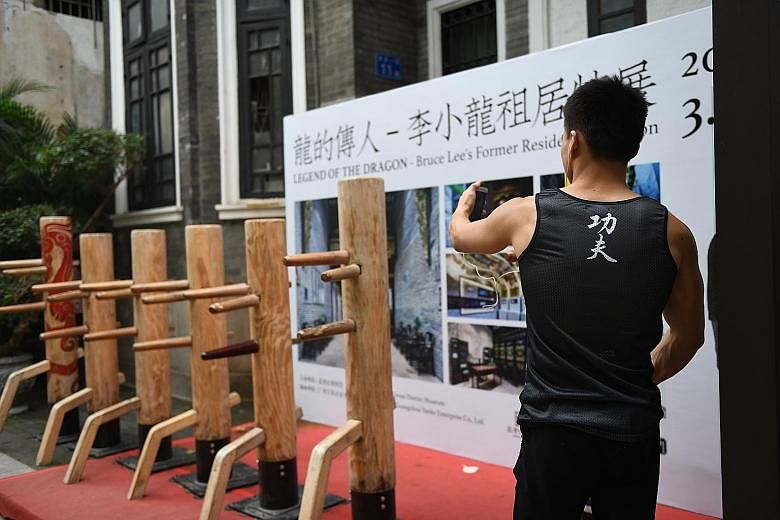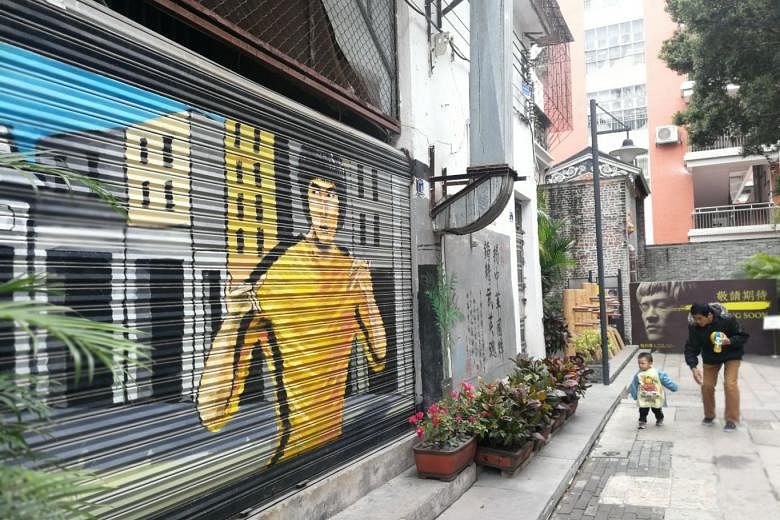GUANGZHOU • The former residence of Bruce Lee's family in China's Guangzhou city has been turned into a museum for the martial arts legend after a demolition plan was derailed by calls for conservation.
The 207 sq m house, with its old exterior and furniture, was left abandoned for years on an old street in the area of Yongqing Fang. It was recently opened to the public free of charge after a facelift that began last December.
"The renovation aims to restore the ancestral home to the greatest extent and reproduce its original layout," said Mr Yu Minfeng, vice-general manager of the Guangzhou branch of Chinese property developer Vanke.
The company, which is in charge of the project, said most of the iconic structures of the brick-and-wooden house, including carved girders and colourful glass screens, had been retained. Lee's family stories, his gongfu learning experience and posters of his movies were also displayed in the museum.
The house was built in the early 20th century and owned by Lee's father Lee Hoi Chuen, a famous Cantonese opera performer. The residence is the main attraction on Yongqing Fang, whose arcade-style buildings are standing monuments to Guangzhou's interaction with the West during the Qing Dynasty (1644 to 1911).
The area has held back bulldozers in the past decade and emerged as a new cultural hub popular among young people.
Now bustling with cafes and boutiques, the street represents a new, more subtle approach to renovating rundown urban areas, instead of demolition and reconstruction often adopted in China.
"It is the first time Guangzhou has avoided a surgery-like renovation that 'rips apart the street's belly' in old urban areas," said Mr Deng Kanqiang, deputy director of the city's planning and natural resources bureau.
The Guangzhou city government included Enning Road, where Yongqing Fang is located, in its transformation plan in 2006. The demolition proposal was later dropped due to opposition from local residents.
When Enning Road was named a historical and cultural street in 2013, a new strategy of "renovating while restoring the original look" was adopted for Yongqing Fang, despite the higher costs.
"Renovating costs 10,000 yuan (S$1,995) for 1 sq m in Yongqing Fang, which is three times the cost of reconstruction," Mr Yu said.
Yongqing Fang leased out its commercial space to remain economically viable. According to Vanke, over 95 per cent of the street's shop space has been rented out. With 10,000 visitors a day, the project largely recouped its costs last year.
Madam Lin Yanxia, 69, who has lived in Yongqing Fang for more than 30 years, is glad that the renovation project has rejuvenated the neighbourhood and wooed back the young people, who had left for more modern parts of the city.
"In the past, only the elderly lived here, and the whole street smelled of herbal medicine," she said. "Now it is much more lively with more young people. I hope my grandson will also enjoy Guangzhou's traditional culture here."
XINHUA


